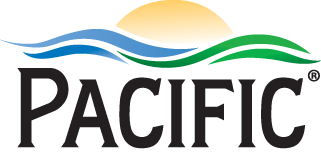FREQUENTLY ASKED QUESTIONS
INSECTS
Our products are field-fresh, field-packed item. They are grown and harvested in nature, where insects live. We take every precaution in the field to eliminate the presence of insects on our vegetables and in our packaging, but despite our best efforts, they do sneak in from time to time. This is generally a result of farming organically, seasonal changes, or industry-wide pressure. We always recommend rinsing the product prior to consuming, which will usually rid the vegetables of any unwanted guests.
FRESHNESS
We ship our products fresh to order, because our goal is to ensure complete satisfaction. To determine if a product is still fresh, we recommend using your best judgement - does it look good (no signs of decay, wilting, etc), does it feel okay (is it mushy, not firm, etc.), does it smell good? There are several reasons decay or premature aging occurs: the grocery store did not rotate the product off the shelf correctly; the product experienced temperature abuse during transit, at the store, or at home (any break in the cold chain can negatively impact quality or cause premature decay); or, the product was not consumed in a timely manner. Please read more about the information on our traceability sticker below to learn how to use that information to determine freshness.
STICKER INFO
What does our sticker information mean and how can it be helpful? Looking at the sticker above, here is what it tells us: 33 501 provides the harvest company and crew that harvested the product in this bag; 21RGCCEL2807 let’s us know the grower, the ranch, and the lot the product in this bag was harvested from; S4717 shares the same information, but is used at the grocery store level; and, harvested on 145 tells us the Julien Date the product was harvested on. Let’s dive a little more into that.
We use the Julien Date, and occasionally the calendar date, to share the date in which the product was harvested. In this case, the product was harvested on May 25th. Knowing how to interpret this date will help the timeframe from harvest date to current date, finding the most recently harvested product on the shelves (the larger the number, the more recent it was harvested), as well as ensuring you consume the product in a timely manner.
DIRT
Our fresh vegetables are field-fresh, field-packed item. They are grown in the nutritious soil on the land we farm our crops. Dirt can get in/on the product due to water splashing when it rains or the product is water, tractors working the ground prior to harvest, weeding crews filter out any unwanted plants that will pull nutrition away from the vegetables, or during harvest. This is one of the reasons we always recommend rinsing the produce prior to consuming - it will rid the vegetable of any dirt quickly and easily.
RECYCLING
We care very much for our environment - as farmers, it is in our best interest to nurture it. Each of our packaging should be marked with an identifying recycling code: low-density (LDPE), recycling code #4. This lightweight plastic is intended for fresh produce use, and when recycled, can be used to make paneling, landscape ties, or even floor tiles. We remain proactive when it comes to new packaging options, and are always on the lookout to improve our carbon footprint.
GMOs
Our company and family of farmers do not utilize GMO varieties, and do not produce bio-engineered crops.






